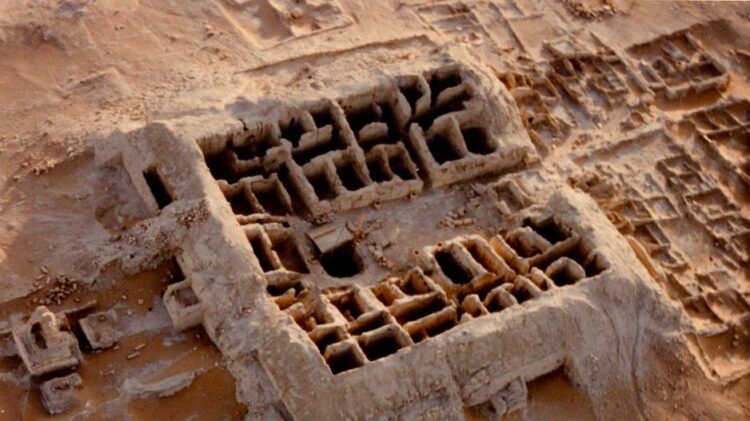The Saudi Heritage Commission discovered an 8000 years old archaeological site at the site of Al-Faw, south-west of the country’s capital, Riyadh.
A Saudi-led multinational team of archaeologists conducted a comprehensive survey of the site using state-of-the-art technology. The study leveraged high-quality aerial photography; guided drone footage utilizing ground control points; a topographic survey; remote sensing, ground-penetrating radar; laser scanning; and geophysical survey, as well as extensive walkover surveys and sondages throughout the site, reported Saudi Press Agency (SPA).
Among the many discoveries at the site, the most significant one was the remains of a stone temple and parts of an altar, with clear indications a life of ceremonies, worship and rituals were intrinsic to the lives of Al-Faw locals once upon a time. The rock-cut temple sits on the edge of Mount Tuwaiq, known as Khashem Qaryah, east of Al-Faw.
The new technology also made it possible to detect the remains of 8,000-year-old Neolithic human settlements along with 2,807 graves of different periods dotted throughout the site, which have been documented and classified into six groups. The ground was adorned throughout with devotional inscriptions giving glimpse into the religious beliefs of the people of Al-Faw. An inscription in the Jabal Lahaq sanctuary invoking the god Kahal, the deity of Al-Faw, by a person named W H B L T (Wahb Allat) from the family of M L H T (Malha), locals of Guerra (the city of Al-Jarha).
Apart from the cultural wealth, the site also confirms the existence of a complex, aesthetic and well-planned city with foundations of four monumental buildings, corner towers, internal plans, and open-air courtyards. The archaeological study further uncovered an intricate irrigation system including canals, water cisterns, and hundreds of pits in the world’s most arid lands and harsh desert environments.
Al-Faw archaeological area has been in the focus archaeological study for the last 40 years. The result of the studies had been published over time in seven book volumes. There were mentions earlier too of a cultural life at Al-Faw, citing residential and market areas, temples, and tombs but the recent discoveries are much more comprehensive in its findings.
More importantly, the discoveries at the Al-Faw site demonstrates that a culture of temples, rituals and idol worship predated the monolithic, non-idol worshipers, anti-temple practises of Islam that exist there today. These discoveries could also challenge the widely accepted premise that the Islamic conquest civilised the desert people of Arabia.



















Comments